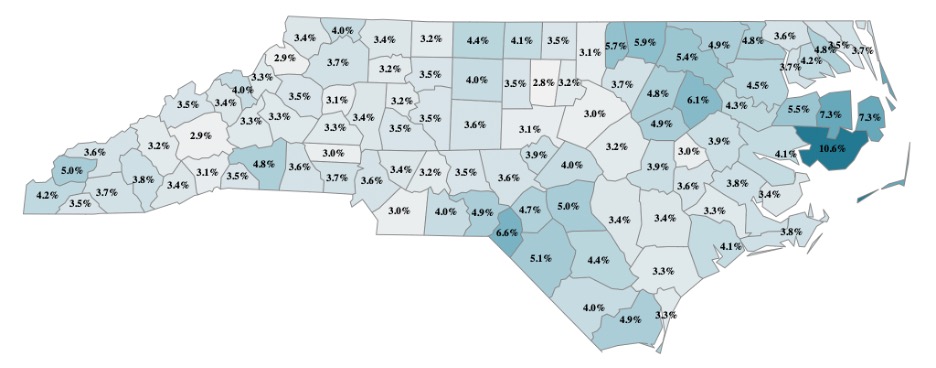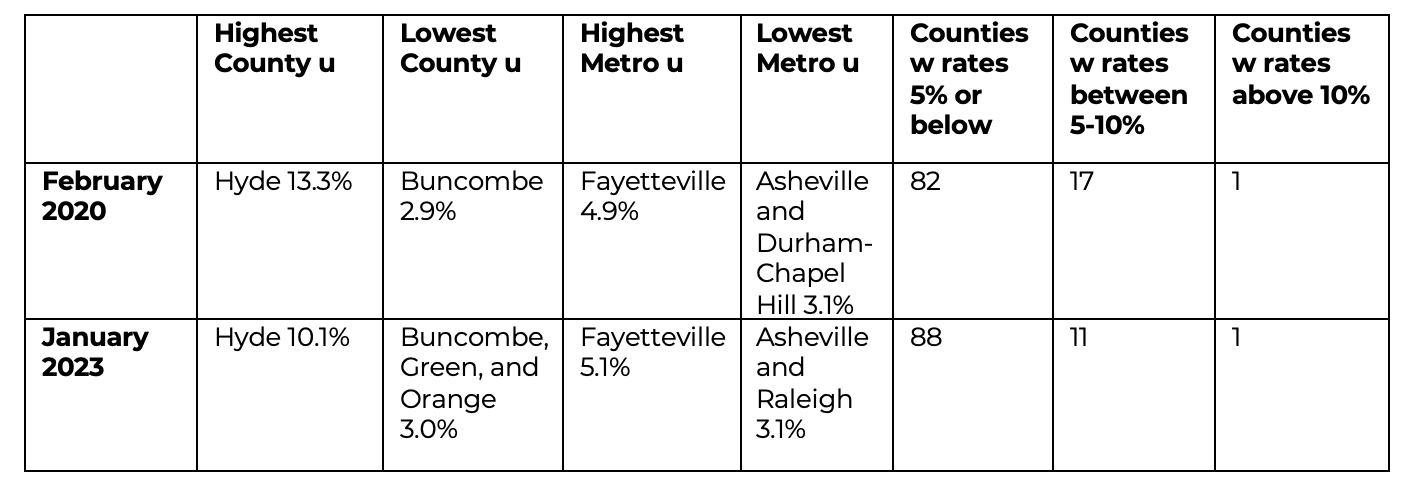The monthly local jobs report reveals unemployment rates and related economic indicators at the county level. The local jobs report for February released Wednesday shows unemployment rates decreased in 74 counties, increased in five, and remained unchanged from January in 21. These employment estimates are not seasonally adjusted and are subject to large, seasonal patterns.
According to the release, “When compared to the same month last year, not seasonally adjusted unemployment rates decreased in 74 counties, increased in 13, and remained unchanged in 13.”

But let’s compare today’s unemployment data to pre-pandemic figures of three years ago. The data shows lower unemployment rates today. More counties have rates at or below 5.0% unemployment.

Unemployment data alone, however, doesn’t show the whole picture.
All but five of the state’s fifteen metro areas have seen their labor force shrink from pre-pandemic levels. The state has 24 micropolitan areas, including Elizabeth City and Boone for example. Only eight have a larger labor force today than in February 2020. Statewide, the labor force has increased in number slightly, but the labor force participation rate is still below what it was just before Covid lockdowns. Using statewide data from February, if the labor force participation rate were at pre-pandemic levels, our state would have 68,464 more people in the labor force.
This means that as people stop looking for work they drop out of the labor force, and they are no longer counted in the unemployment rate, making the economic data look better than it is.
As I wrote previously, this trend is not unique to North Carolina. But it is important as a strong labor force is crucial to any economic recovery. And people’s attachment to the job market is important for more than a paycheck. Jobs also bring stability and well-being. As the nation experiences recession warning signs, labor force participation will be important to watch.


